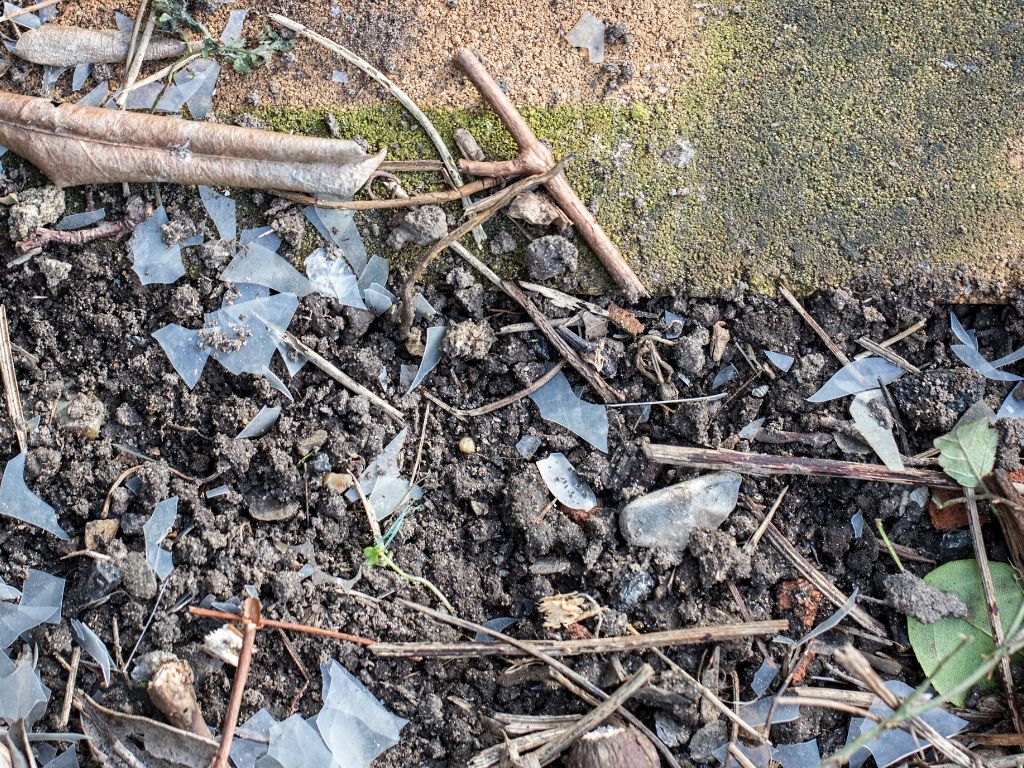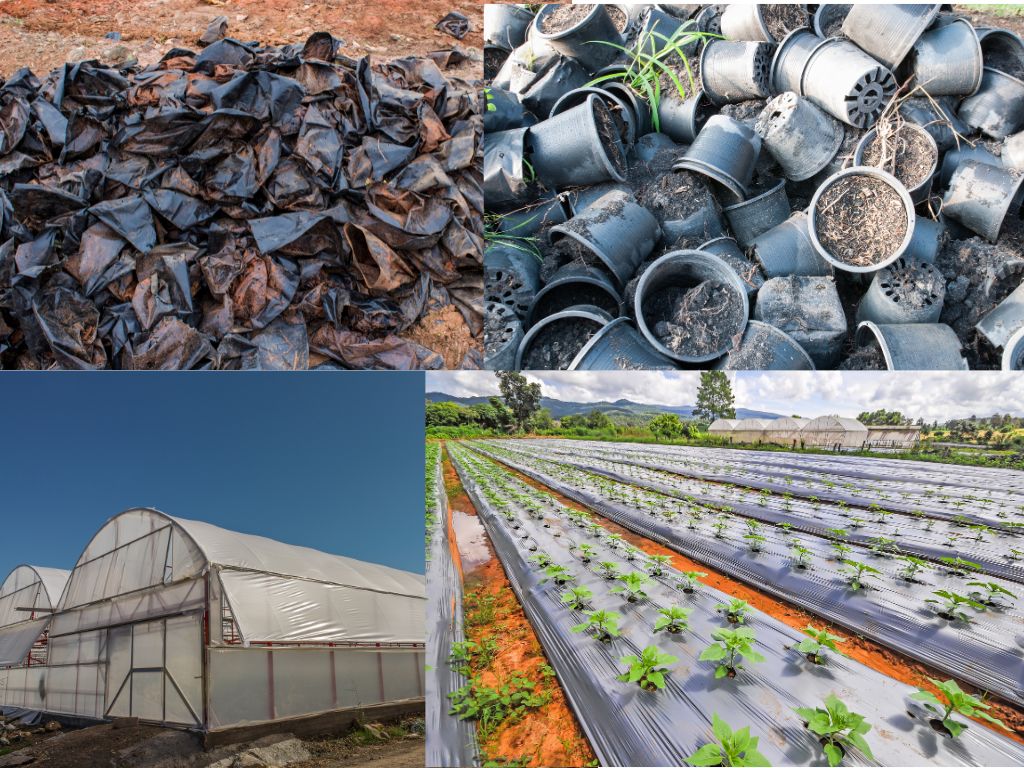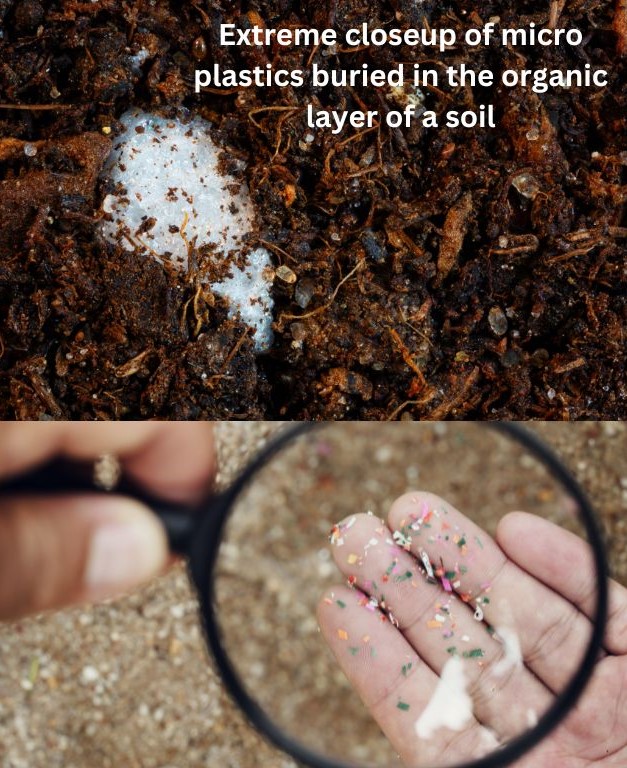Microplastics in Soil: sources, negative impact and strategies to mitigate the problem

This post is also available in:
This post is also available in:
![]() Français (French)
Français (French)
Have you ever considered the impact of tiny pieces of plastic on the environment? Microplastics are tiny plastic fragments (usually less than 5 mm) that result from partly decomposed plastic materials that are left behind, altering the characteristics of the soil flora and organisms and posing a severe threat to our food growth. This article will explore ways to tackle this issue and help create a safer environment for all.
What’s Happening?
Microplastics are tiny plastic fragments smaller than a grain of rice and are anthropogenically mediated menace causing a major environmental problem.
Initially, they were identified as pollutants in the oceans, but now they are increasingly found in terrestrial environments, especially in soils across various landscapes, including agricultural fields and home gardens. The fact that it is present in soil is alarming because it represents a less visible but equally pervasive form of pollution than plastic waste in oceans.

Where do these tiny plastics come from – Sources of Microplastics?
Microplastics are tiny pieces of plastic that end up in the soil from many different sources. Some plastic materials are intentionally made small, like the little bits in face scrubs and toothpaste. Other microplastics are created when bigger plastic materials, like shopping bags and drink bottles or mulch materials, break down over time into smaller pieces.
Microplastics can be found in agricultural fields from various sources such as compost, agricultural mulching, sewage sludge, and littering. Agricultural activities are considered one of the main ways microplastics end up in soils (through plastic mulch and compost application, etc.) (van Schothorst et al., 2021; Yu et al., 2023). Sometimes, microplastics are carried by the wind and rain into more remote areas.
Why are microplastics a problem, and do we need to address it?
The infiltration of microplastics into soil ecosystems is a cause for concern due to their potential impact on soil health and fertility. These particles can alter the physical properties of soil, such as texture, porosity, and water retention capacity, potentially leading to increased soil compaction and reduced aeration. This can hinder root growth and limit the availability of water and nutrients to plants, ultimately affecting crop yields. Moreover, microplastics can absorb and release harmful chemicals, acting as carriers for pesticides, heavy metals, and other pollutants, further degrading soil quality.
How can microplastic affect the soil microorganisms (soil fauna)?
The presence of microplastics in soil ecosystems can adversely affect microorganisms and invertebrates. These organisms, including bacteria, fungi, earthworms, and other soil-dwelling creatures, are vital for maintaining soil health. They play essential roles in nutrient cycling, organic matter decomposition, and soil structure maintenance. Microplastics can physically obstruct these organisms’ activities, interfere with their feeding and reproductive behaviors, and even cause toxicity. Such interference can disrupt biological processes, leading to a decline in soil biodiversity and functionality, ultimately impacting overall ecosystem services.

How can microplastic affect the soil microorganisms
Soil types may be affected by microplastics differently.
The effect of microplastics on soil can differ based on various factors, including the concentration, type, and size of microplastics, as well as the specific properties of the soil, like texture, organic matter content, and microbial community composition. Microplastics have different impacts on different soils, with some soils being more vulnerable to their adverse effects than others. For example, sandy and clay-rich soils could experience varying changes in their physical characteristics when contaminated with microplastics.
How do we address the problem of microplastics in soils?
A comprehensive approach is required to tackle the issue of microplastics in soil. It is crucial to conduct further research to understand better the extent of microplastic pollution in soils, its sources, pathways, and impacts on soil health and crop productivity. This knowledge is key to developing effective strategies to mitigate the problem. Farmers and gardeners have a crucial role in this effort and should be informed about the potential sources of microplastic contamination in their practices. Reducing the use of plastic in agriculture, promoting sustainable waste management, and adopting biodegradable alternatives can significantly decrease the accumulation of microplastics in soil. Public awareness and policy interventions are also necessary to address this growing environmental challenge and safeguard our soil ecosystems for future generations.
References
van Schothorst, B., Beriot, N., Huerta Lwanga, E., & Geissen, V. (2021). Sources of light density microplastic related to two agricultural practices: The use of compost and plastic mulch. Environments – MDPI, 8(4). https://doi.org/10.3390/ENVIRONMENTS8040036
Yu, Y., Battu, A. K., Varga, T., Denny, A. C., Zahid, T. Md., Chowdhury, I., & Flury, M. (2023). Minimal Impacts of Microplastics on Soil Physical Properties under Environmentally Relevant Concentrations. Environmental Science & Technology, 57(13), 5296–5304. https://doi.org/10.1021/acs.est.2c09822









































































